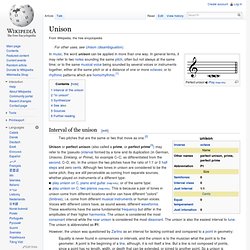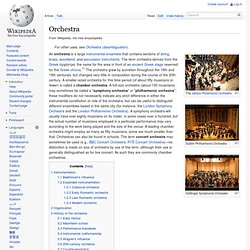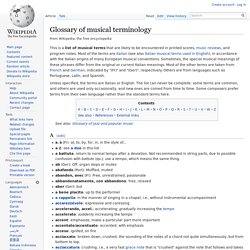

Tonic (music) Major seventh chord on C Play .

I7 or tonic seventh chord in C major.[1] Minor-minor (i7) seventh chord on C in natural minor.[2] Play In very much conventionally tonal music, harmonic analysis will reveal a broad prevalence of the primary (often triadic) harmonies: tonic, dominant, and subdominant (i.e., I and its chief auxiliaries a 5th removed), and especially the first two of these. Two parallel keys have the same tonic. Tonic may be reserved exclusively for use in tonal contexts while tonal center and/or pitch center may be used in post- and atonal music: "For purposes of non-tonal centric music, it might be a good idea to have the term 'tone center' refer to the more general class of which 'tonics' (or tone centers in tonal contexts) could be regarded as a subclass The tonic diatonic function includes four separate activities or roles as the principal goal tone, initiating event, generator of other tones, and the stable center neutralizing the tension between dominant and subdominant.
Unison. Interval of the unison [edit] Two pitches that are the same or two that move as one.[2] play unison on C, piano and guitar ; or of the same type: play unison on C, two pianos .

This is because a pair of tones in unison come from different locations and/or can have different "colors" (timbres), i.e. come from different musical instruments or human voices. Voices with different colors have, as sound waves, different waveforms. "In unison"[edit] "Twinkle Twinkle Little Star" melody doubled in four octaves. Play piano Several singers singing a melody together.[2] When several people sing together, as in a chorus, the simplest way for them to sing is to sing in "one voice", in unison.
From this sense can be derived another, figurative, sense: if several people do something "in unison" it means they do it simultaneously, in tandem, in lockstep. When there are two or more voices singing different notes, this is called "part singing". Major scale. Major scales C major scale ) Structure[edit] The pattern of whole and half steps characteristic of a major scale.

Tempo. Play In musical terminology, tempo ("time" in Italian; plural: tempi or tempos) is the speed or pace of a given piece.

Measuring tempo[edit] Electronic metronome, Wittner model The tempo of a piece will typically be written at the start of a piece of music, and in modern Western music is usually indicated in beats per minute (BPM). This means that a particular note value (for example, a quarter note or crotchet) is specified as the beat, and that the amount of time between successive beats is a specified fraction of a minute. With the advent of modern electronics, BPM became an extremely precise measure. As an alternative to metronome markings, some 20th-century composers (such as Béla Bartók and John Cage) would give the total execution time of a piece, from which the proper tempo can be roughly derived.
Tempo is as crucial in contemporary music as it is in classical. Musical vocabulary for tempo[edit] A Seth Thomas model metronome. Orchestra. Dublin Philharmonic Orchestra Göttinger Symphonie Orchester An orchestra is a large instrumental ensemble that contains sections of string, brass, woodwind, and percussion instruments.

The term orchestra derives from the Greek ὀρχήστρα, the name for the area in front of an ancient Greek stage reserved for the Greek chorus.[1] The orchestra grew by accretion throughout the 18th and 19th centuries, but changed very little in composition during the course of the 20th century. A smaller-sized orchestra for this time period (of about fifty musicians or fewer) is called a chamber orchestra. Instrumentation[edit] Viotti Chamber Orchestra performing the 3rd movement of Mozart's Divertimento in D Major (K136) The typical symphony orchestra consists of four groups of similar musical instruments called the woodwinds, brass, percussion, and strings. Beethoven's influence[edit] Expanded instrumentation[edit] Glossary of musical terminology. This is a list of musical terms that are likely to be encountered in printed scores, music reviews, and program notes.

Most of the terms are Italian (see also Italian musical terms used in English), in accordance with the Italian origins of many European musical conventions. Sometimes, the special musical meanings of these phrases differ from the original or current Italian meanings. Most of the other terms are taken from French and German, indicated by "(Fr)" and "(Ger)", respectively. Others are from languages such as Portuguese, Latin, and Spanish. Unless specified, the terms are Italian or English.